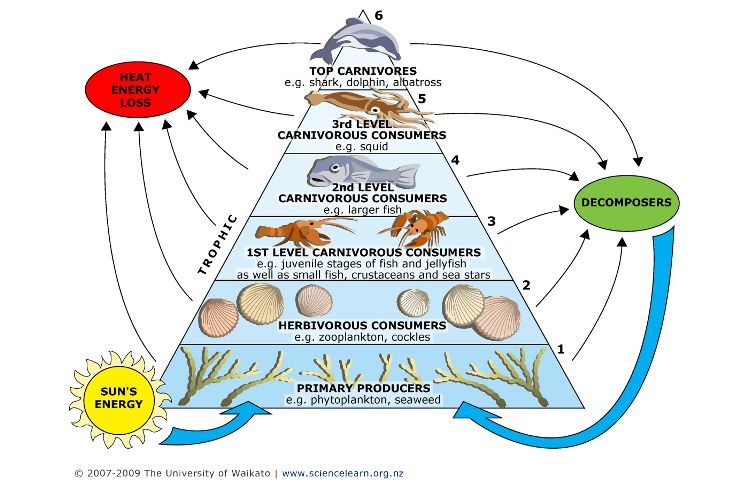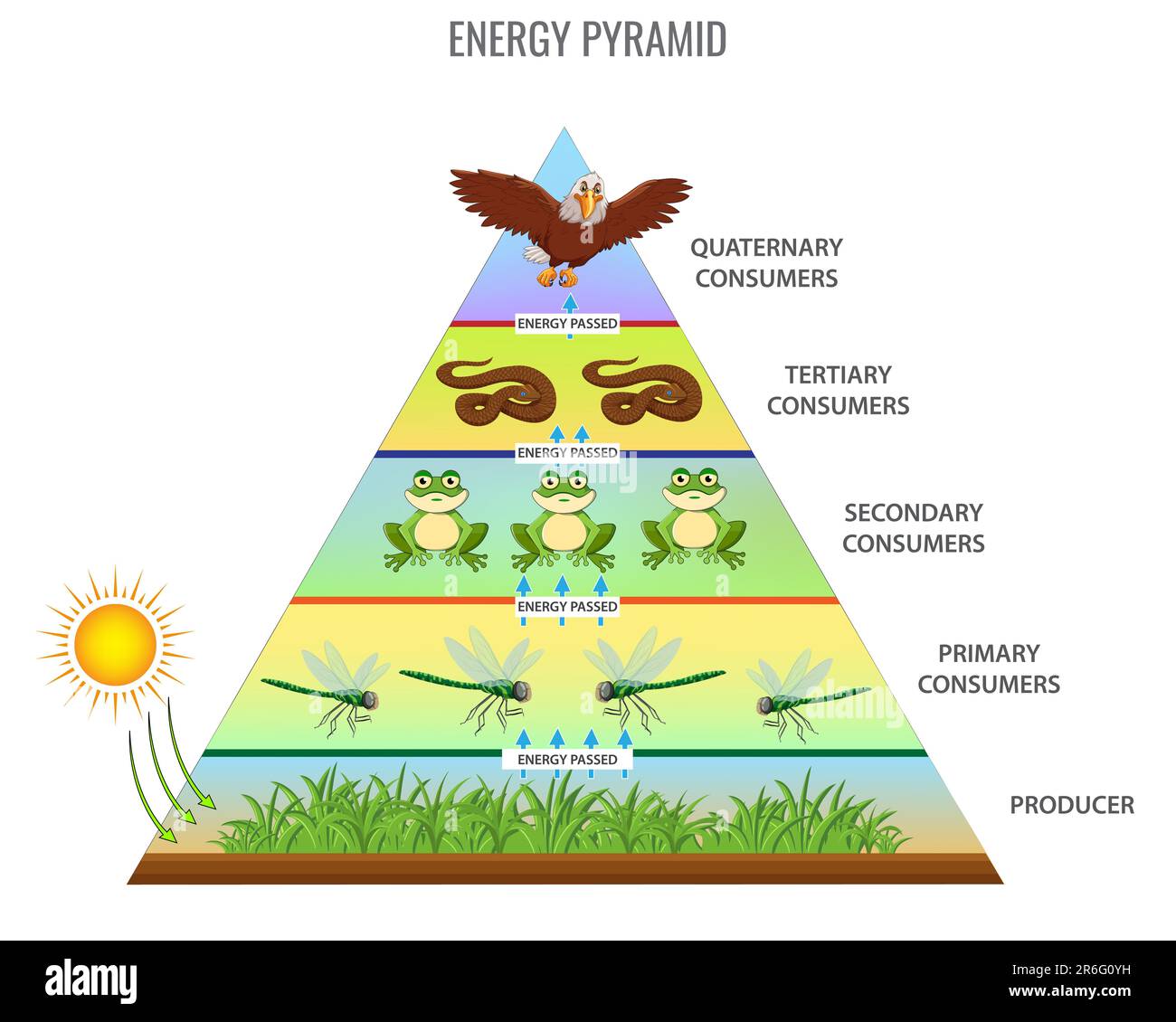Meals ecosysm – Meals ecosystems, the intricate tapestry of lifestyles and sustenance, shape the cornerstone of our planet’s ecological stability. They’re dynamic and interconnected networks that surround all residing organisms, from the tiniest microorganisms to the majestic whales, and the non-living elements in their surroundings.
Inside of those ecosystems, an enchanting dance of interactions unfolds, the place every species performs a the most important function in keeping up the subtle equilibrium. Manufacturers, shoppers, decomposers, and abiotic elements intertwine, growing a fancy internet of power drift and nutrient biking that sustains lifestyles on Earth.
Meals Ecosystem Parts

A meals ecosystem is a neighborhood of residing organisms along with the nonliving elements in their surroundings (such things as air, water and soil), interacting as a gadget. The meals ecosystem may also be small or huge. Ecosystems are the main elements of the biosphere, the a part of Earth this is inhabited through residing issues.
Meals ecosystems are labeled into two major sorts: herbal ecosystems and synthetic ecosystems. Herbal ecosystems are shaped naturally with out human intervention, whilst synthetic ecosystems are created and maintained through people, akin to farms and gardens.
Manufacturers
Manufacturers are organisms that may make their very own meals from inorganic topic. They’re the root of the meals ecosystem, offering power for all different organisms. Crops are the main manufacturers in maximum ecosystems, the use of daylight, water, and carbon dioxide to provide glucose thru photosynthesis.
- Examples:Crops, algae, and a few micro organism
- Position:Convert daylight into power (glucose) thru photosynthesis
Customers
Customers are organisms that can not make their very own meals and should eat different organisms to acquire power. Customers are labeled into other trophic ranges according to their feeding behavior.
- Number one shoppers (herbivores):Feed at once on manufacturers
- Secondary shoppers (carnivores):Feed on number one shoppers
- Tertiary shoppers (best predators):Feed on secondary shoppers
Decomposers, Meals ecosysm
Decomposers are organisms that wreck down useless organisms and waste merchandise into more practical components. They play a the most important function in recycling vitamins again into the ecosystem.
- Examples:Micro organism, fungi, and worms
- Position:Spoil down natural topic into inorganic vitamins
Abiotic Elements
Abiotic elements are nonliving elements of the ecosystem that affect the survival and distribution of organisms. Those elements come with:
- Local weather:Temperature, precipitation, and daylight
- Water:Availability and high quality
- Soil:Sort, fertility, and pH
- Topography:Elevation, slope, and side
Meals Webs and Trophic Ranges
Meals webs depict the intricate connections between organisms in an ecosystem according to their feeding relationships. They lengthen past easy meals chains, appearing the interdependence of more than one species and the drift of power thru other trophic ranges.
Trophic ranges classify organisms according to their place within the meals internet. Every degree represents a step within the switch of power from manufacturers to best predators.
Trophic Ranges
- Manufacturers:Autotrophic organisms (e.g., crops) that convert daylight into power thru photosynthesis.
- Number one Customers:Herbivores (e.g., deer) that feed at once on manufacturers.
- Secondary Customers:Carnivores (e.g., foxes) that feed on number one shoppers.
- Tertiary Customers:Carnivores (e.g., wolves) that feed on secondary shoppers.
- Most sensible Predators:Organisms (e.g., lions) on the easiest trophic degree, without a predators.
Simplified Meals Internet
Believe a simplified meals internet in a woodland ecosystem:
Manufacturers:Timber, shrubs, and grasses
Number one Customers:Deer, rabbits, and mice
Secondary Customers:Foxes, owls, and snakes
Tertiary Customers:Wolves and mountain lions
Most sensible Predators:None
Power flows from manufacturers to best predators, with every trophic degree shedding roughly 90% of the power it consumes.
Power Drift and Nutrient Biking: Meals Ecosysm
Power drift and nutrient biking are elementary processes inside meals ecosystems, making sure the continual availability of power and vitamins for organisms at other trophic ranges. Power enters the ecosystem thru number one manufacturers, akin to crops, and flows unidirectionally thru shoppers, whilst vitamins are recycled and reused throughout the gadget.
Power Drift
- Power enters the ecosystem thru daylight, which is captured through crops throughout photosynthesis.
- Crops use this power to provide natural topic, which is ate up through herbivores (number one shoppers).
- Herbivores are ate up through carnivores (secondary shoppers), and so forth.
- At every trophic degree, a good portion of power is misplaced as warmth because of metabolic processes.
- Simplest about 10% of power is transferred from one trophic degree to the following, leading to a pyramid-shaped power drift diagram.
Nutrient Biking
- Vitamins, akin to nitrogen, phosphorus, and potassium, are very important for plant expansion and are recycled throughout the ecosystem.
- Decomposers, akin to micro organism and fungi, wreck down useless organisms and free up vitamins again into the soil.
- Crops take in those vitamins and use them for expansion, whilst animals download vitamins through eating crops or different animals.
- Nutrient biking guarantees a continuing provide of very important components for organisms in any respect trophic ranges.
The processes of power drift and nutrient biking are interconnected and important for the stableness and functioning of meals ecosystems. They be certain that a continuing drift of power and vitamins, supporting the survival and expansion of organisms at other trophic ranges.
Ecosystem Products and services and Human Have an effect on

Meals ecosystems supply quite a lot of products and services which might be very important for human well-being. Those products and services come with:
- Meals manufacturing: Meals ecosystems give you the overwhelming majority of the meals we consume. Crops convert daylight into power thru photosynthesis, which is then handed up the meals chain to animals. People are on the best of many meals chains, and we depend on crops and animals for our meals.
- Water purification: Meals ecosystems lend a hand to purify water through filtering out pollution and sediment. Crops and animals in meals ecosystems additionally lend a hand to keep an eye on water drift, which is able to save you flooding and erosion.
- Carbon sequestration: Meals ecosystems lend a hand to take away carbon dioxide from the ambience. Crops take in carbon dioxide throughout photosynthesis, and animals free up carbon dioxide once they breathe. Alternatively, the online impact of meals ecosystems is to take away carbon dioxide from the ambience, which is helping to mitigate local weather exchange.
Human Have an effect on on Meals Ecosystems
Human actions will have an important affect on meals ecosystems. Those affects come with:
- Air pollution: Air pollution can hurt crops and animals in meals ecosystems. As an example, air air pollution can harm crops, and water air pollution can hurt fish and different aquatic organisms.
- Habitat loss: Habitat loss happens when herbal spaces are transformed to different makes use of, akin to agriculture or construction. Habitat loss can scale back the volume of meals and refuge to be had to crops and animals, and it could actually additionally disrupt meals chains.
- Local weather exchange: Local weather exchange is inflicting adjustments in temperature, precipitation, and different environmental prerequisites. Those adjustments will have an important affect on meals ecosystems. As an example, emerging temperatures could cause crops and animals to transport to new spaces, and adjustments in precipitation can impact the supply of water for crops and animals.
Meals Safety and Sustainability

Meals safety is a vital side of human well-being, making sure get admission to to enough, protected, and nutritious meals for all folks always. It’s intently intertwined with the stableness and productiveness of meals ecosystems, which give you the basis for meals manufacturing and distribution.
Keeping up sustainable meals ecosystems is paramount within the face of rising inhabitants and environmental pressures. Because the human inhabitants continues to increase, so does the call for for meals, placing a pressure on herbal sources and ecosystems. Local weather exchange, air pollution, and land degradation additional exacerbate those demanding situations, disrupting meals manufacturing and distribution techniques.
Demanding situations to Meals Safety and Sustainability
- Expanding inhabitants and urbanization
- Local weather exchange and excessive climate occasions
- Air pollution and degradation of herbal sources
- Unsustainable agricultural practices
- Inequitable distribution of meals
Alternatives for Meals Safety and Sustainability
- Making an investment in sustainable agriculture practices
- Lowering meals waste and loss
- Selling nutritional range and native meals techniques
- Making improvements to meals distribution and get admission to
- Teaching shoppers about sustainable meals possible choices
By means of addressing those demanding situations and embracing those alternatives, we will reinforce the resilience of meals ecosystems and make sure meals safety for provide and long term generations.
Case Research and Actual-International Examples
Meals ecosystems show off various traits and demanding situations international. Case research and real-world examples supply treasured insights into their complexities and control methods.
The Serengeti Ecosystem
The Serengeti ecosystem in East Africa is famend for its huge grasslands, various natural world, and sophisticated meals webs. The once a year wildebeest migration, involving hundreds of thousands of animals, is a spectacle that highlights the interdependence of species and the ecosystem’s resilience. Alternatively, the ecosystem faces demanding situations akin to habitat loss, poaching, and local weather exchange, necessitating cautious control to maintain its ecological integrity.
The Chesapeake Bay Ecosystem
The Chesapeake Bay ecosystem in the US is a big estuary with a wealthy historical past of fisheries and seafood manufacturing. Alternatively, overfishing, nutrient air pollution, and habitat degradation have ended in a decline in its ecological well being. Control methods, together with fishing laws, nutrient relief plans, and habitat recovery efforts, are being applied to revive the ecosystem’s productiveness and biodiversity.
The Effectiveness of Control Methods
The effectiveness of control methods for protecting and embellishing meals ecosystems will depend on quite a lot of elements, together with the particular ecosystem, the control targets, and the extent of stakeholder involvement. Case research have proven that collaborative approaches, adaptive control tactics, and science-based decision-making can give a contribution to the a hit implementation and results of control methods.
FAQ
What’s a meals ecosystem?
A meals ecosystem is a neighborhood of residing organisms along with the nonliving elements in their surroundings (such things as air, water and soil), interacting as a gadget. Those biotic and abiotic elements are related in combination thru nutrient cycles and effort flows.
What are the other elements of a meals ecosystem?
Meals ecosystems include manufacturers, shoppers, decomposers, and abiotic elements. Manufacturers are organisms that may make their very own meals from inorganic topic, shoppers are organisms that can not make their very own meals and should consume different organisms, decomposers are organisms that wreck down useless organisms, and abiotic elements are nonliving issues that impact the ecosystem, akin to daylight, water, and temperature.
What’s the significance of meals ecosystems?
Meals ecosystems are very important for lifestyles on Earth. They supply us with meals, blank water, and air, they usually lend a hand to keep an eye on the local weather. Meals ecosystems additionally supply us with many different advantages, akin to game, tourism, and training.
